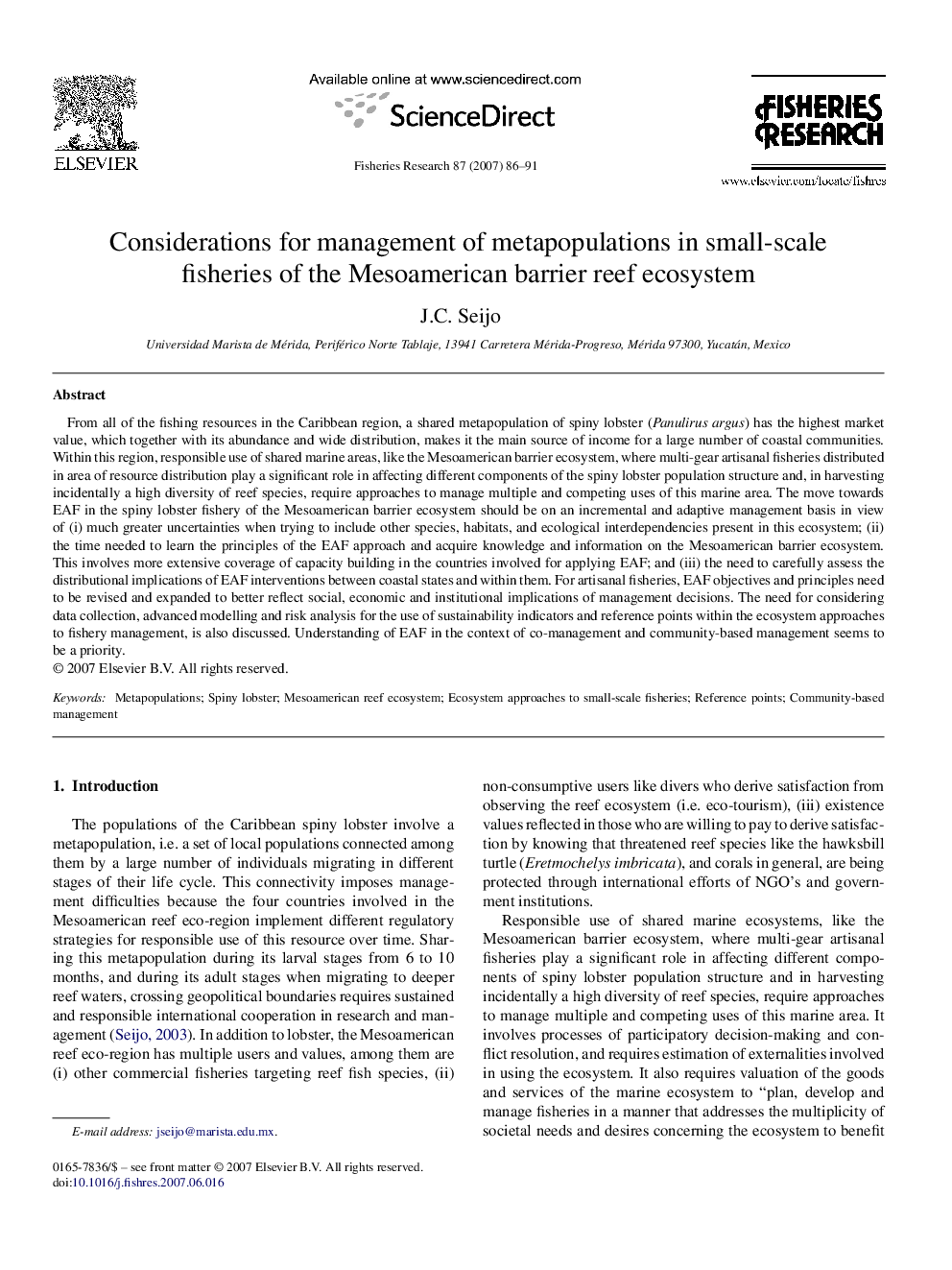| Article ID | Journal | Published Year | Pages | File Type |
|---|---|---|---|---|
| 4544601 | Fisheries Research | 2007 | 6 Pages |
From all of the fishing resources in the Caribbean region, a shared metapopulation of spiny lobster (Panulirus argus) has the highest market value, which together with its abundance and wide distribution, makes it the main source of income for a large number of coastal communities. Within this region, responsible use of shared marine areas, like the Mesoamerican barrier ecosystem, where multi-gear artisanal fisheries distributed in area of resource distribution play a significant role in affecting different components of the spiny lobster population structure and, in harvesting incidentally a high diversity of reef species, require approaches to manage multiple and competing uses of this marine area. The move towards EAF in the spiny lobster fishery of the Mesoamerican barrier ecosystem should be on an incremental and adaptive management basis in view of (i) much greater uncertainties when trying to include other species, habitats, and ecological interdependencies present in this ecosystem; (ii) the time needed to learn the principles of the EAF approach and acquire knowledge and information on the Mesoamerican barrier ecosystem. This involves more extensive coverage of capacity building in the countries involved for applying EAF; and (iii) the need to carefully assess the distributional implications of EAF interventions between coastal states and within them. For artisanal fisheries, EAF objectives and principles need to be revised and expanded to better reflect social, economic and institutional implications of management decisions. The need for considering data collection, advanced modelling and risk analysis for the use of sustainability indicators and reference points within the ecosystem approaches to fishery management, is also discussed. Understanding of EAF in the context of co-management and community-based management seems to be a priority.
